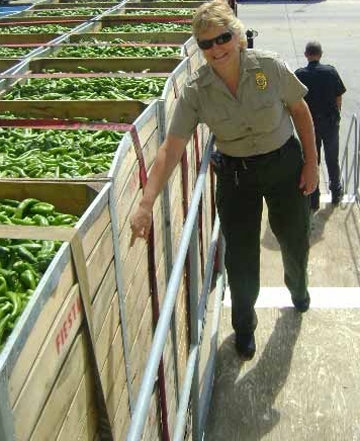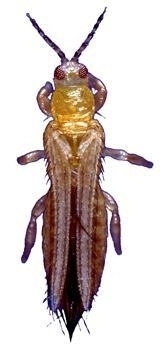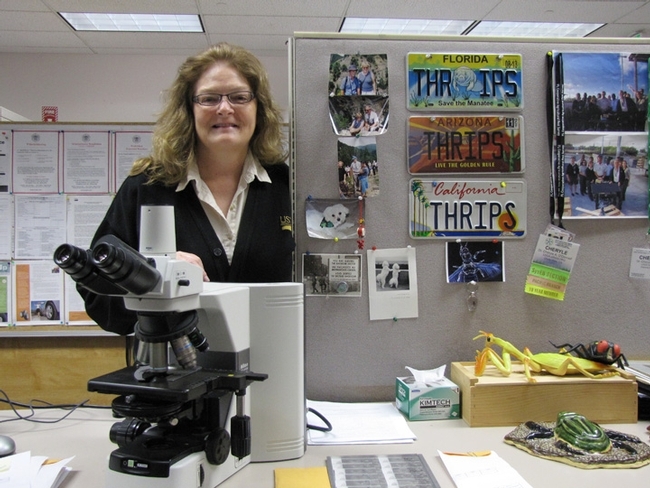
As of April 6, the former San Diego resident is the National Thysanoptera Taxonomist with the National Identification Services (NIS) at the Systematic Entomology Laboratory (SEL) in Beltsville, MD.
Specifically, her position is with the National Identification Services (NIS) of the Plant Protection and Quarantine (PPQ) program of USDA's Animal and Plant Health Inspection Service (APHIS) or what USDA officials refer to as "APHIS PPQ NIS." The Thysanoptera collection of the Systematic Entomology Laboratory (SEL) is housed with USDA's Agricultural Research Service (ARS).
“I love my work,” she said, “and I love my favorite insect, thrips.”
Thrips are tiny insects that cause billions worth of damage annually to U.S. agricultural crops. Barely visible to the naked eye, they heavily damage fruits, vegetable and horticultural crops, so much so that they can—and do--pose a biosecurity threat. In 1996, Cuba's Fidel Castro accused the United States of aerially releasing Thrips palmi over potato fields.
“Of the more than 5000 species of thrips known in the world, some are serious pests, and some are beneficial as pollinators and predators,” O'Donnell said. “Some thrips transmit plant diseases, such as the tomato spotted wilt virus and the Impatients necrotic spot viruses.”
“To monitor agricultural crops effectively, it's important to be able to identify them, but it's difficult to do so without understanding thrips taxonomy and identification,” O'Donnell said. “Thrips are so small—one millimeter long or less--that they're like a speck. Inspectors see larvae, eggs and adults on plant material coming in. It's difficult to separate species at the life stage of eggs, larvae and adult males.”

“There were many times I was doubtful that I could continue to meet the demands of my chosen field,” O'Donnell said, crediting her family, friends and UC Davis scientists with offering her the support she needed to complete her education.
O'Donnell holds three degrees from UC Davis: a bachelor's in agricultural systems and the environment (1997), a master's degree in plant protection and pest management (2000) and a doctorate in entomology (2007).
After receiving her doctorate, she joined the USDA as “the co-lateral Thysanoptera specialist, USDA-APHIS-PPQ,” west of the Mississippi. That is, she was a key thrips specialist for the Animal and Plant Health Inspection Service's Plant Protection and Quarantine Program. Her work involved detecting, identifying and intercepting thrips and other pests arriving at U.S. ports from around the world.
Her major professor Diane Ullman, a professor in the UC Davis Department of Entomology and Nematology, describes her as "a tremendously talented biologist and she holds a real fascination for thrips, their classification, host relationships and biology."
"She will do a fantastic job in this position, which will be important to the global community studying thrips and trying to develop management strategies," Ullman told us.
Read more about Cheryle O'Donnell here. She offers good advice to prospective graduate students in encouraging them to follow their dreams: "Focus on your goals, never deviate from those goals, and never allow obstacles to get in the way,” she advises. "It is a difficult and challenging path you have chosen but it will be worth all the hard work. The UC Davis community, the ‘village' which supports you, is an experience you will never forget and the payoff will be great throughout your life.”
Meanwhile, O'Donnell is anticipating two mid-May thrips conferences at the Asilomar Conference Center, Pacific Grove. One of the key organizers is Professor Ullman. See more information.
Attached Images:
